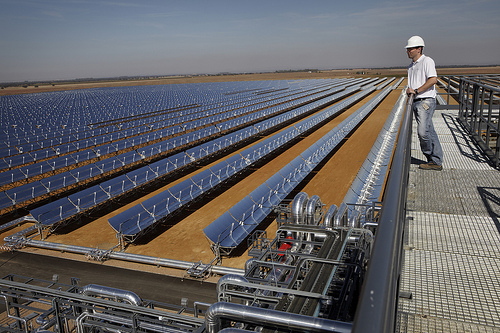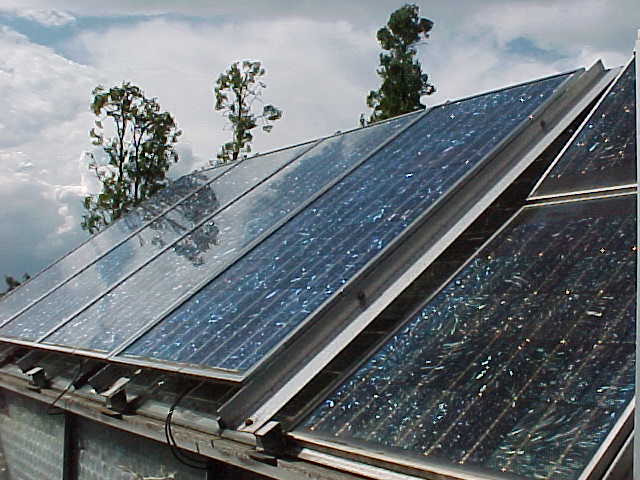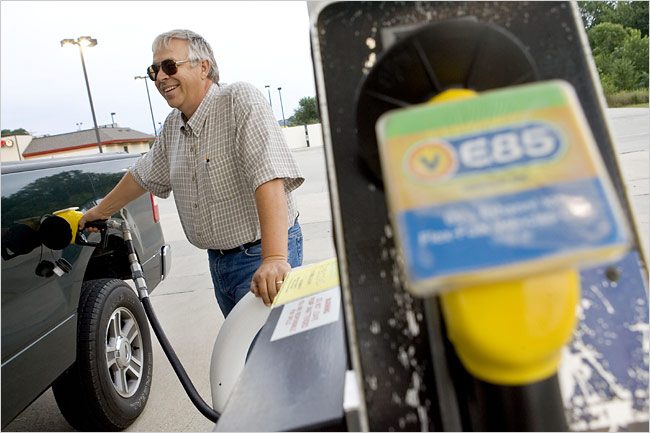Two decades have past since a solar thermal power plant has been approved in California and on Wednesday, the California Energy Commission approved a 250 mega-watt solar thermal plant.
The Beacon Solar Energy Project will be a step forward for California coming closer to the law that was set out for investor-owned utility companies to produce 20 percent of their energy from renewable sources, such as solar. Although it is not promising that the 20 percent mark will not be reached by all utility companies, the California Energy Commission will soon vote on eight more large-scale solar thermal plants.
The Beacon project was first applied for in March of 2008 by NextEra Energy Resources and the lengthy processes are due to that fact that the many of these developers must win permits from the state and the U.S. Bureau of Land Management. NextEra is building on private land so the process was shorter than most but they are still in need of a utility customer to buy the elecetricity produced from their solar thermal plant.
The location for the solar thermal plant is on 2,000 acres along the edge of the Mojave Desert in Kerns County. The Beacon project will use a specific solar thermal technology where troughs of mirrors are curved in shape to concentrate the sunlight onto liquid-filled tubes. The liquid tubing will then create steam to drive a turbine to turn and generate electricity. Over 500 million gallons of water is needed annually at the solar thermal plant to produce steam and to cool the equipment since heat is produced.
Due to the arid climate of the region, regulators and environmentalists were skeptical of the plant because of the water needed so NextEra decided that recycled municipal water from a nearby neighborhood will be used instead of groundwater. Moreover, the solar plant should have minimal impact on the pristine nature of the land and the wildlife that thrives in the Mojave.
Commissioner Jeffrey Byron of the California Energy Commission said, “I hope this is the first of many more large-scale renewable energy projects that this commission will permit.” The eight other plants that are said to be voted upon soon for approval are in a tight situation since Obama’s economic stimulus package can fund 30 percent of a renewable energy project’s costs if the construction starts by the end of this year.
Image Bilfinger Berger Group via Flickr under a CC license.







Ok seems like a lot of machine to produce electric only in the day time. Guess what you can make electricity all day long with a Nuclear power plant! And not take up so much land area! You green people are needed but get real!!
I also worked at the plant that made some of the mirrors for this project. I also heard that they were having a hard time getting transmission lines ran to the site because of concerns about impacts on animal life in the desert!! And by the way the earth has been here longer than us and will be here after we all kill ourselves off. THE EARTH ABIDES!!! with or without us here
Renewable energy is derived from natural processes that are replenished constantly. In its various forms, it derives directly from the sun, or from heat generated deep within the earth.Solar energy is the energy derived from the sun through the form of solar radiation. Solar powered electrical generation relies on photovoltaics and heat engines. A partial list of other solar applications includes space heating and cooling through solar architecture, daylighting, solar hot water, solar cooking, and high temperature process heat for industrial purposes.Solar technologies are broadly characterized as either passive solar or active solar depending on the way they capture, convert and distribute solar energy. Active solar techniques include the use of photovoltaic panels and solar thermal collectors to harness the energy.